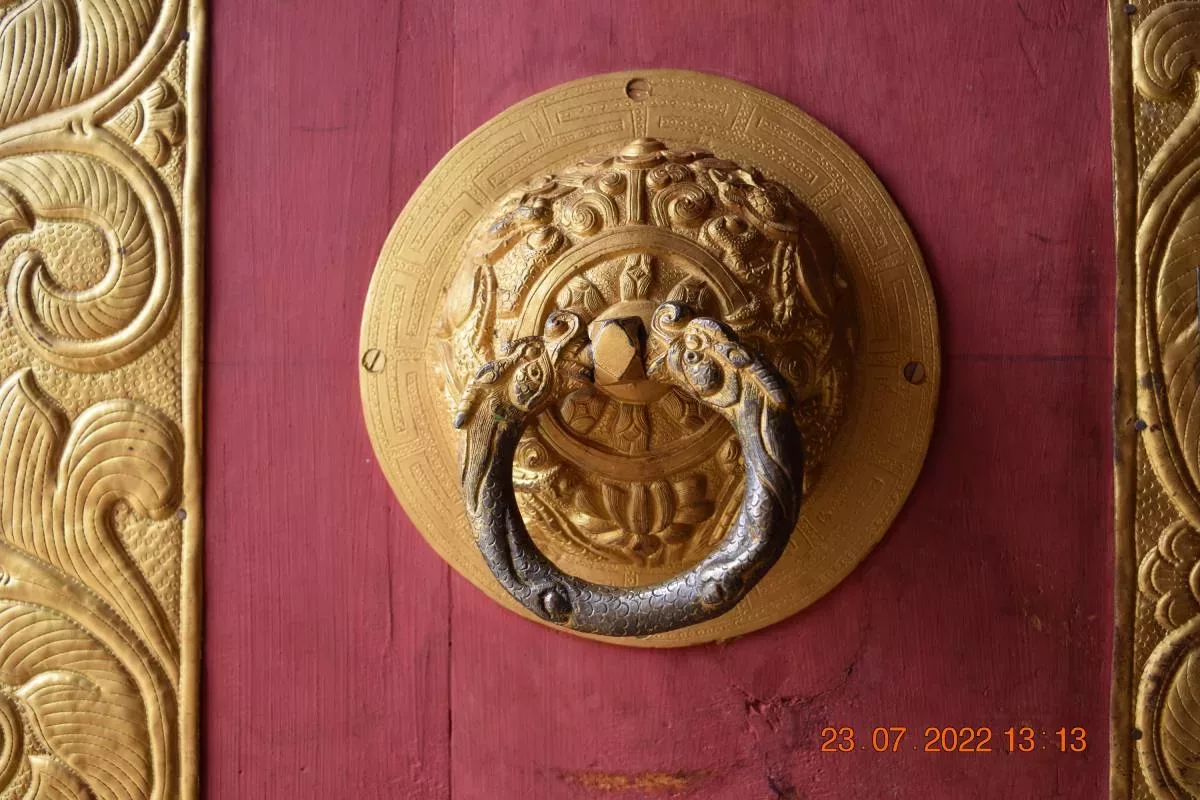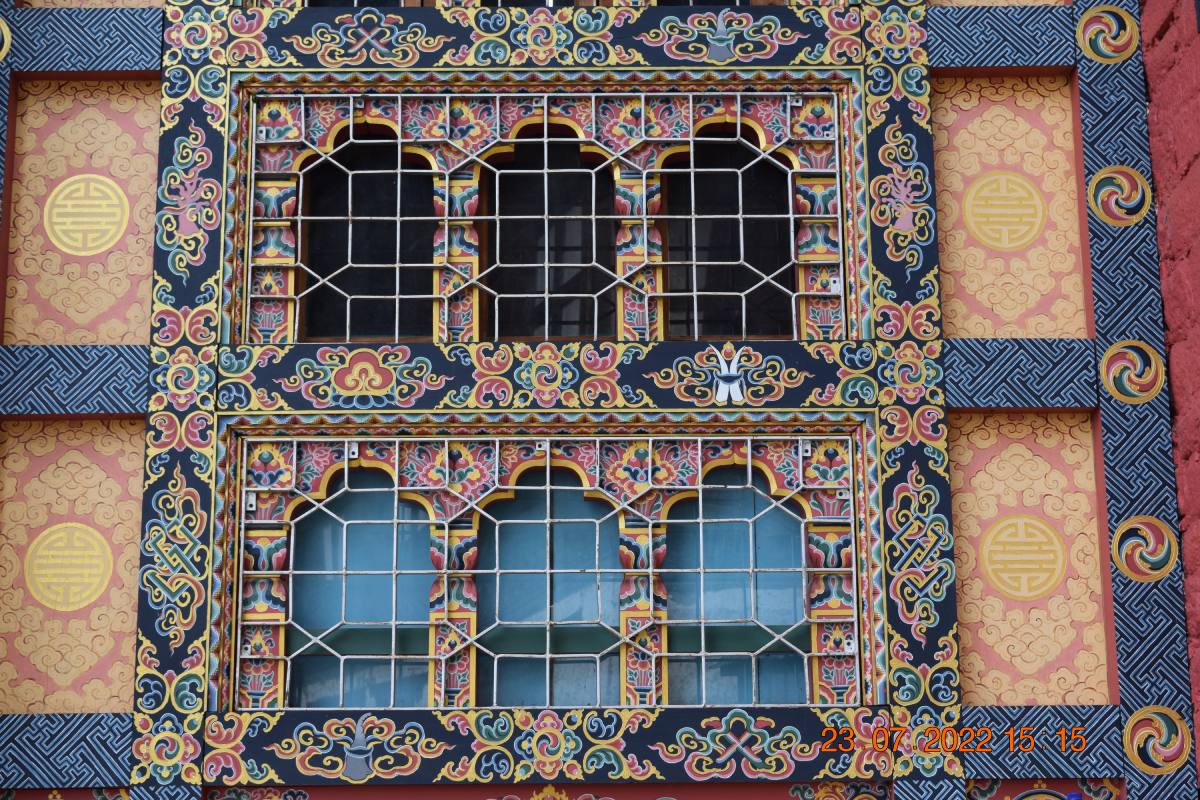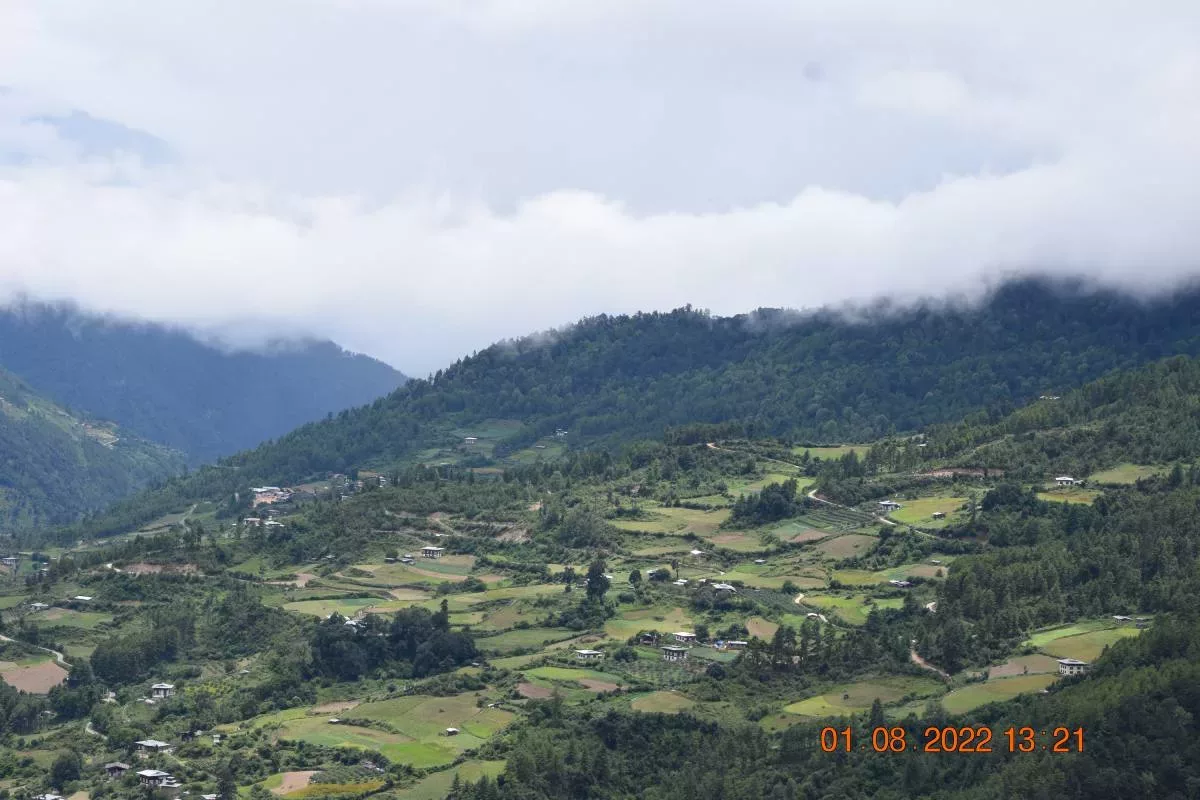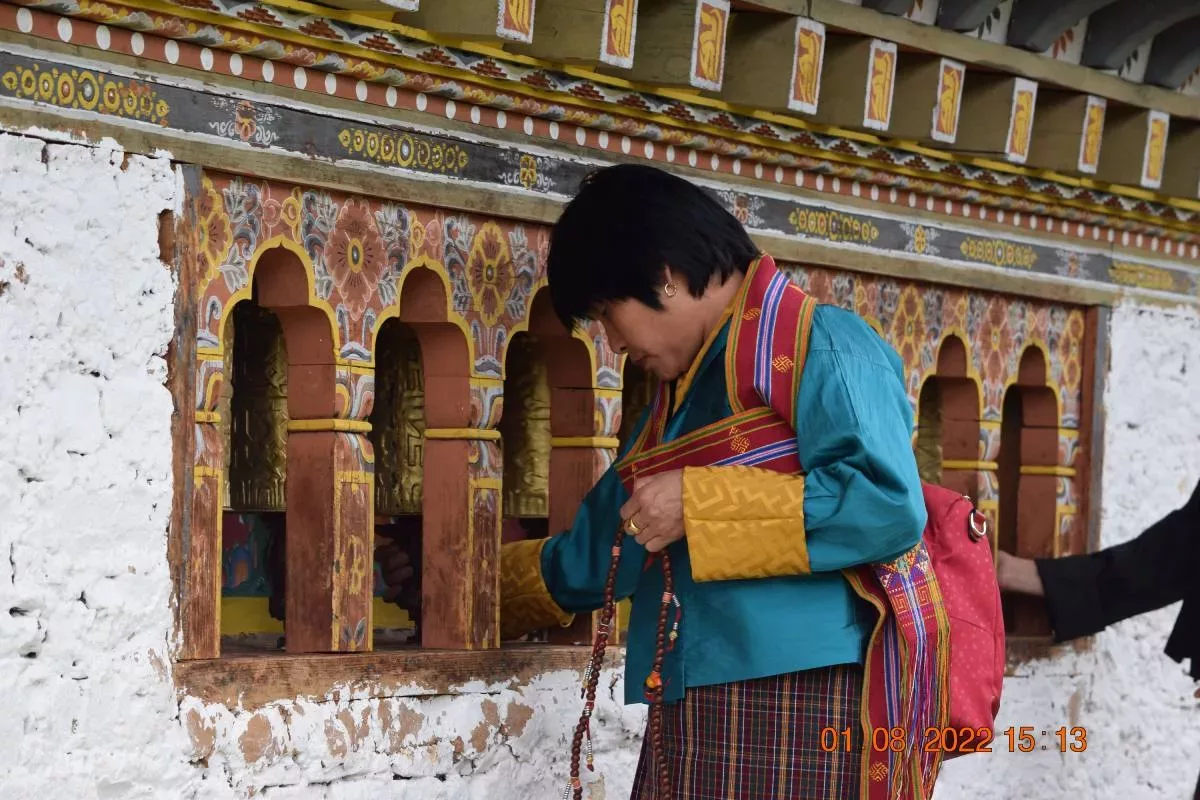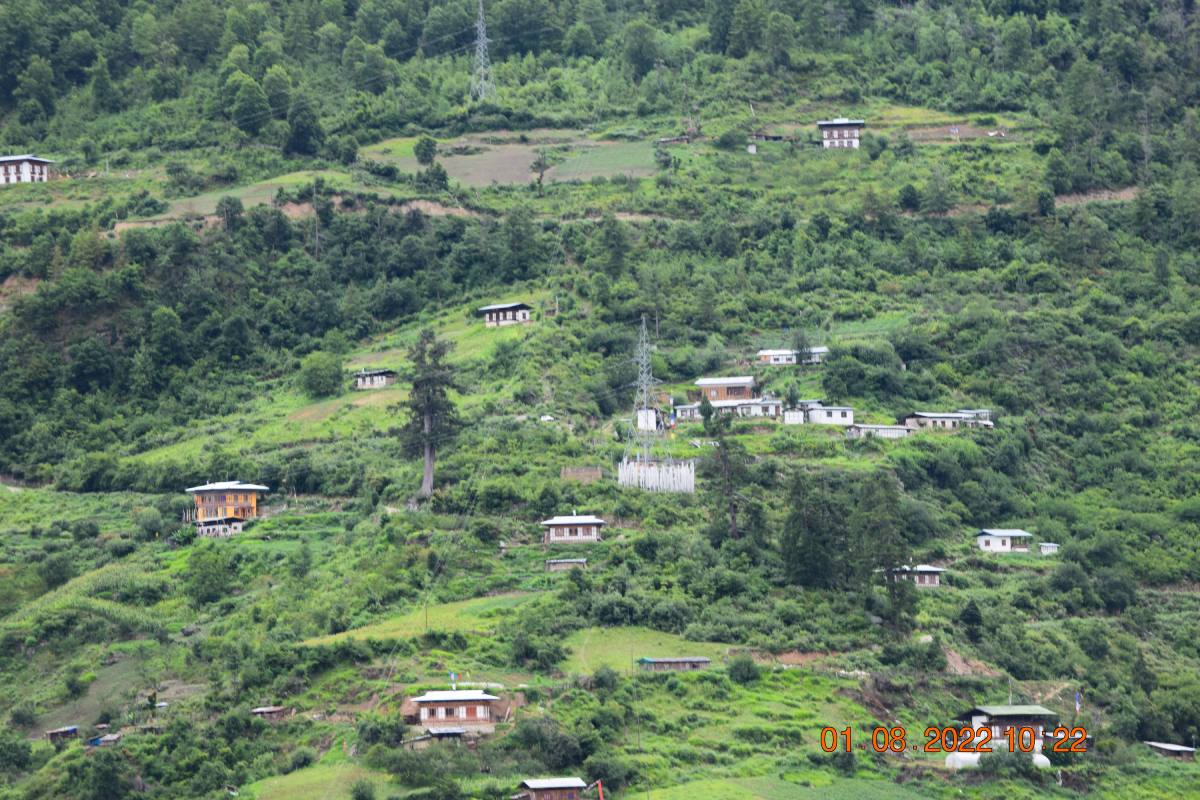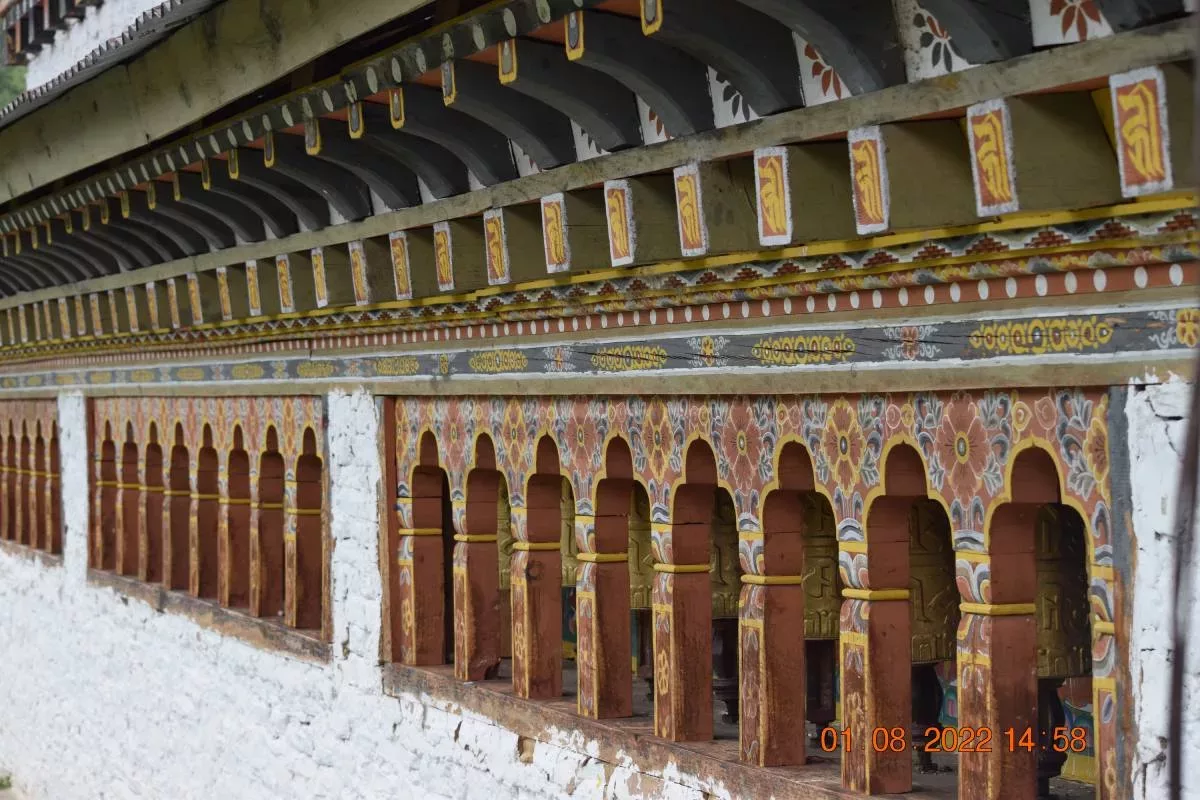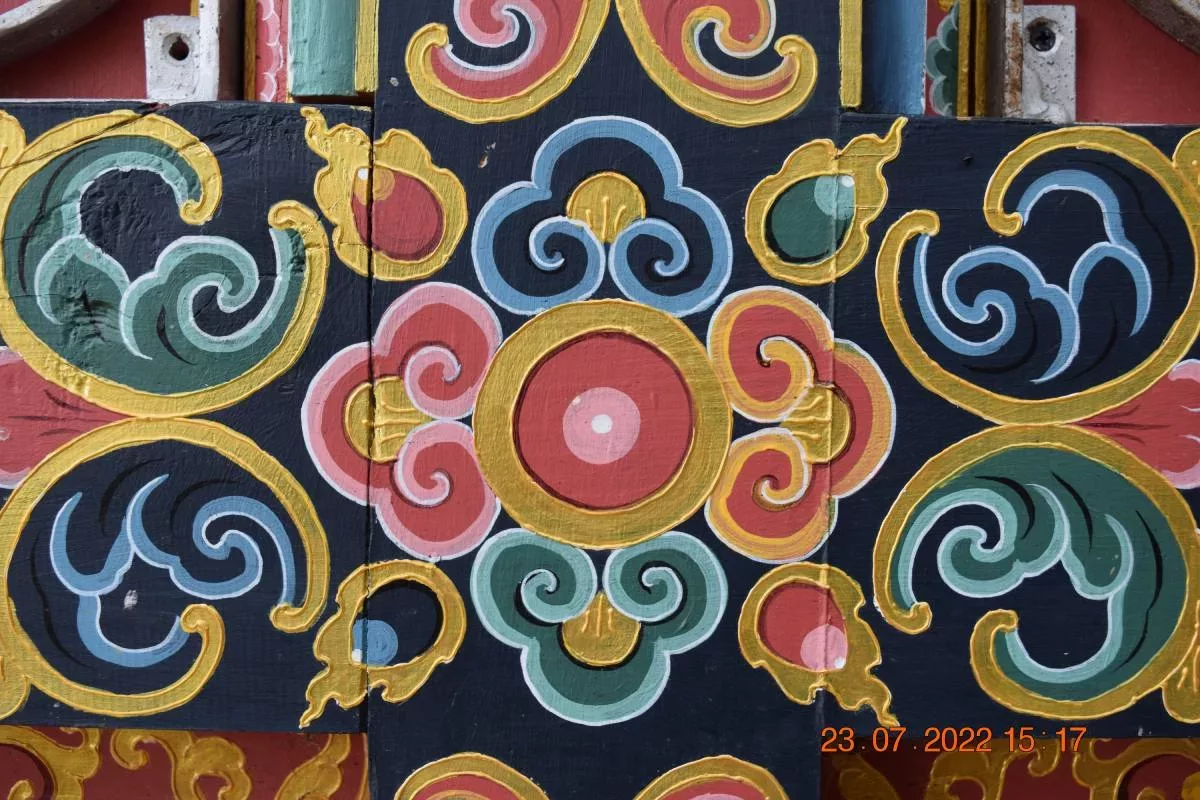Detailed Program
The flight to Paro is one of the most spectacular mountain flights in the world, with a constantly changing panorama of some of the highest mountains on earth. Our representative will meet you at Paro airport exit doors following customs formalities. After lunch enjoys afternoon sightseeing around Paro, including a visit to the Ta Dzong Museum housing many religious relics, works of art, and handicrafts offering a great orientation into Bhutan’s historical, cultural, and religious past.
Next, visit the Rimpung Dzong to see the painting of the great saint Milarepa, considered the master of meditation by the Bhutanese and believed to have attained enlightenment in a lifetime. Dzong’s are large monasteries and district administrative centers, which were once strategic forts. Afterward, drive to the capital, Thimphu (1.5 hours) following the Pachu River. Before dinner at the hotel, there will be an orientation on Bhutanese etiquette by our Host.
Overnight at your hotel in Thimphu.
Places and attractions:
- Tashichho Dzong
- Semthoka Dzong
- Dochu La Pass
- Memorial Chorten
- Changangkha Lhakhang
- Zangdopelri
- The Tallest Buddha Image
- Tango And Cheri Monasteries
- The Handicrafts Emporium
- Traditional Medicine
- Zorig Chusum Institute
- National Library
- Weekend Market
- Botanical Garden
- Thadrak Goemba
- Tashigang Goemba
- Chizhing Samtencholing Lhakhang
Accommodation options:
Enjoy a morning of sightseeing, including a visit to the 12th-century Changangkha Temple, the Zulikha Nunnery, and the National Memorial Chorten depicting the Buddhist faith in the form of paintings and statues. This temple was first initiated by the Third King as a protection from the negative elements of modernization, and as a monument to world peace.
The Royal Queen Mother completed it as a memorial stupa for the Third King who passed away in 1972. In the afternoon return to Tashichhodzong to further experience the colorful events of the Thimphu festival.
Overnight at your hotel in Thimphu.
Places and attractions:
- Tashichho Dzong
- Semthoka Dzong
- Dochu La Pass
- Memorial Chorten
- Changangkha Lhakhang
- Zangdopelri
- The Tallest Buddha Image
- Tango And Cheri Monasteries
- The Handicrafts Emporium
- Traditional Medicine
- Zorig Chusum Institute
- National Library
- Weekend Market
- Botanical Garden
- Thadrak Goemba
- Tashigang Goemba
- Chizhing Samtencholing Lhakhang
Accommodation options:
Drive over the Dochula pass (3,100 meters), which on a clear day offers an incredible view of Himalayan peaks before descending into balmy Punakha valley (about 3 hrs total driving time). The drive through the countryside affords a glimpse of everyday life in this most remote of Himalayan kingdoms. In the Dochu-La area, there are vast Rhododendron forests that grow to tree size and bloom in late April/early May covering the mountains in a riot of glorious spring color.
Punakha was the ancient capital of Bhutan. On arrival, visit Punakha Dzong, the “Palace of Great Happiness” built in 1637 by the Zhabdrung, the ‘Unifier of Bhutan’. It is situated at the confluence of the Mo Chu and Pho Chu (Mother and Father Rivers) and is the winter headquarters of the Je Khenpo and hundreds of monks who move en masse from Thimphu to this warmer location.
The three-story main temple of the Punakha Dzong is a breathtaking example of traditional architecture with four intricately embossed entrance pillars crafted from cypress and decorated in gold and silver. The insides walls are covered with elaborate murals depicting the teaching of the Buddha. It was here in 1907 that Bhutan’s first king was crowned.
Places and attractions:
- Punakha Dzong
- Khamsum Yulley
- Talo Goenpa
- Nalanda Buddhist College
- Chorten Nyingpo Lhakhang
- Sangchen Dorji Lhuendrup
- Limukha Village
- Ritsha Village
Accommodation options:
After breakfast enjoys a short hike through rice fields up to Khamsum Yulley Namgyal Chorten, built by her majesty the queen Ashi Tshering Yangdon Wangchuk. Perched high on a hill on the bank of the river, the Chorten houses paintings belonging to Nyingmapa Traditions.
Take a picnic lunch on a picturesque riverside before an excursion to visit 15th-century Chimi Lhakhang, the temple of Drukpa Kuenley who is also known as the Divine Madman. He inherited the Divine Madman title since he revolted against the orthodox Buddhism of his time. He is considered a symbol of fertility and many childless couples go to his temple for blessing.
Overnight at your hotel in Punakha/ Wangduephodrang.
Places and attractions:
- Punakha Dzong
- Khamsum Yulley
- Talo Goenpa
- Nalanda Buddhist College
- Chorten Nyingpo Lhakhang
- Sangchen Dorji Lhuendrup
- Limukha Village
- Ritsha Village
Accommodation options:
Transfer to Trongsa (6 hrs). Drive via the bustling market town of Wangduephodrang. Drive up a winding mountain road through oak and rhododendron forests and over the Pele La pass (3,420m) on the Black Mountain range towards Trongsa. This pass is traditionally considered the boundary between western and central Bhutan. Further down the road stop to visit beautiful Chendebji Chorten. It is built in a style unusual for Bhutan, with painted eyes facing four directions.
The imposing Trongsa Dzong can be viewed across a deep canyon to signal your approach to the town around a curving road. On arrival, enjoy some relaxation time before visiting Trongsa Dzong, a masterpiece of Bhutanese architecture. Trongsa is the largest Dzong in Bhutan. The foundations of Trongsa Dzong were laid in the 16th Century and there are now 22 temples in the complex.
The view from the Dzong is spectacular and one can see across the impressive landscape for many miles. In the old days, it was the vigilance point for both the eastern and western trade routes, thus a strategically important Dzong.
Overnight at your hotel in Trongsa.
Places and attractions:
Accommodation options:
Following breakfast visit the Ta Dzong museum located on the hill overlooking the Trongsa Dzong. The museum’s main focus is on the history of the monarchy and is dedicated to the coronation and centenary celebrations of the Bhutanese monarchy with very rare and precious artifacts on display.
These include statues built in the 17th century, the first King’s Namza (dress), the Raven Crown and Sword of Trongsa Penlop Jigme Namgyal, and the 3rd King. Afterward, proceed to Bumthang (2.5 hrs), one of the most spectacular valleys in Bhutan and also the spiritual and historical heartland of the country.
The road winds steeply up to Yutong La Pass (3,400m) before descending through the dense coniferous forest to Chumey valley. From here it is about an hour to Jakar, Bumthang’s main township.
Bumthang is home to some of Bhutan’s oldest Palaces, Buddhist temples, and monasteries. The valley’s barley fields, apple groves, and meadows lay below huge hills which climb up towards the Himalayan mountain wall separating Bhutan from Tibet. The beautiful architecture unique to Bhutan is evident in the many large farmhouses and temples. Bumthang is associated with Guru Rimpoche (Padmasambhava) and with Terton Pema Lingpa. After lunch, visit Jakar Dzong, also known as ‘Fortress of the White Bird’.
The great grandfather of Zhabdrung founded it. The Dzong was initially built as a Monastery in 1549 but was upgraded after Zhabdrung had firmly established his power in 1646. The Dzong is now used as the administration center for Bumthang valley.
Places and attractions:
Accommodation options:
Transfer to the remote Tangbi Mani village for the day by vehicle and a 45-minute walk. Spend the day viewing the Tangbi Mani Festival in an enchanting rural atmosphere. You will be captivated by the dances and costumed performances accompanied by clapping cymbals, drums, horns, and the unforgettable chanting of Buddhist monks.
Watch on as the dancers whirl their array of colorful brocades through the air, play local games and stroll handicraft stalls, explore around the village and visit locals at their homes. In the afternoon transfer back to Jakar.
Overnight at your hotel in Bumthang.
Places and attractions:
Accommodation options:
Enjoy a day of sightseeing in Bumthang beginning with Jambay Lhakhang, one of 108 temples built by the Tibetan King Songtsen in the 7th Century. It was here that Guru Rimpoche conducted his first sermon on Tantric Buddhism for his host King Sendha, the local ruler, his family, and subjects. Continue to Kurjey Lhakhang, famous for a rock within one of the temples that features a body imprint of the great master Guru Rimpoche.
The big cypress tree on the temple grounds is believed to be the walking stick of Guru Rimpoche. Afterward visit Tamshing Lhakhang, the seat of Bumthang’s famous son, saint Pema Lingpa. He built it himself in 1501. A skilled tantric master and artist, he sculpted the main statues and painted the frescoes, some of Bhutan’s oldest which can still be seen even today, mostly in their original state. There is also a chain mail made by Pema Lingpa that devotees carry and circumambulate the inner sanctum to cleanse sins.
Overnight at your hotel in Bumthang.
Places and attractions:
Accommodation options:
Start early today for Gangtey, about 6 hrs from Bumthang. Farmhouses and temples dot the landscape and you will see local farmers wearing the traditional woven bamboo hats of central Bhutan.
The wide and picturesque Phobjikha valley is one of Bhutan’s few glacial valleys, and chosen winter home of black-necked cranes (November – March) migrating from the Tibetan plateau. Visit Gangtey Gompa (Temple), the only Nyingmapa monastery in western Bhutan.
Overnight at your hotel in Phobjikha.
Places and attractions:
- Dargay Goemba
- Gangtey Gompa
- Temple Of Sha Radap
- Gaselo & Nahee Village
- Adha And Rukha Village
- Shaa Region Of Wangdiphodrang
- Bhey Langdrag Nye
Accommodation options:
Morning visit to view the Black-Necked Cranes (winter only) before departing for Thimphu (approx. 6 hrs). From Gangtey the road gradually descends into the balmy Punakha valley before climbing up over Dochu La Pass and into Thimphu.
Overnight at your hotel in Thimphu.
Places and attractions:
- Tashichho Dzong
- Semthoka Dzong
- Dochu La Pass
- Memorial Chorten
- Changangkha Lhakhang
- Zangdopelri
- The Tallest Buddha Image
- Tango And Cheri Monasteries
- The Handicrafts Emporium
- Traditional Medicine
- Zorig Chusum Institute
- National Library
- Weekend Market
- Botanical Garden
- Thadrak Goemba
- Tashigang Goemba
- Chizhing Samtencholing Lhakhang
Accommodation options:
After breakfast enjoy a morning hike to Tango Monastery (approx. 1 hr walk). Tango Monastery is a higher education institute for Buddhist monks built there in the 15th century by Drukpa Kunley (‘The Divine Madman’).
Like many Bhutanese monasteries, Tango was built over a cave where meditation and miracles were said to take place. The monastery has no less than twelve corners and, it is said, was built in only two months – including the six temples within. On a clear day, the views of the surrounding valley and hills are amazing.
In the afternoon continue sightseeing in Thimphu. Visit the School for Arts and Crafts, The National Library housing the collection of Bhutanese scriptures dating back to the 8th century, the Traditional Paper Factory, and a fascinating replica of a medieval farmhouse at the Folk Heritage Museum.
Afterward, transfer to Paro overnight.
Places and attractions:
- Rinpung Dzong
- Drukgyel Dzong
- Taktshang
- Kyichu Lhakhang
- Kila Gompa
- Dungtse Lhakhang
- Tachog Lhakhang
- Dzongdrakha
Accommodation options:
After breakfast hike to Taktsang Temple. The walk of approximately 1.5 to 2 hours uphill takes you almost a kilometer above the Paro valley floor (for those who cannot hike we will arrange a horse for transfer up to the cafeteria). The view of Taktsang Monastery built on a sheer cliff face 900 meters above the valley floor is a spectacular sight.
The Monastery is also an important pilgrimage site for the Buddhists. The great Guru Rimpoche is said to have flown here on the back of a tigress when he brought the teachings of the Buddhist Dharma to Bhutan in the 8th Century. Nearby there is a teahouse where you can stop for refreshments before returning to Paro for lunch. In the afternoon drive to the ruins of the 17th Century Drukgyel Dzong, built to commemorate a victory against invading Tibetans in 1644.
In fine weather, the towering peak of the sacred Mount Jumolhari (7314m) appears as a stunning backdrop. On the return drive to Paro, visit 7th Century Kyichu Lhakhang, one of the 108 temples constructed by the Tibetan king Songtsen Gampo. Alternatively, day 13 could be spent on a day trip to the Haa Valley, one of the most picturesque districts in Bhutan. Reached via the beautiful Chelela Pass, Haa Valley is characterized by its surrounding rugged and mountainous terrain.
Overnight at your hotel in Paro.
Places and attractions:
- Rinpung Dzong
- Drukgyel Dzong
- Taktshang
- Kyichu Lhakhang
- Kila Gompa
- Dungtse Lhakhang
- Tachog Lhakhang
- Dzongdrakha
Accommodation options:
Breakfast in the hotel then drives to the airport for the flight to your onward destination.
Tashi Delek!
- Inclusion
- Exclusion
- Insurance
- Airport pick-up and drop-off by private vehicle.
- 3-star accommodation (4 & 5 stars may require an additional premium update).
- Bhutan visa fee – including all necessary processing
- Route Permit
- Three meals per day during your stay in Bhutan
- A licensed Bhutanese tour guide
- All land transportation by private vehicle
- Camping equipment and haulage for trekking tours
- Sightseeing as per itinerary
- Monuments entrance fees where applicable
- Drinking water
- All internal taxes and charges
- A sustainable development fee of $200. (This sustainable development fee goes towards free education, free healthcare, and poverty alleviation, along with the building of infrastructure.)
- Airfare & Travel Insurance
- Expenses of personal nature, Tips to guides and drivers
- Expenses occurred due to unavoidable events i.e. road wrecks, flight delays etc.
Package does not include insurance of any kinds, and that you are required to obtain separate coverage from your home country before your trip begins.

